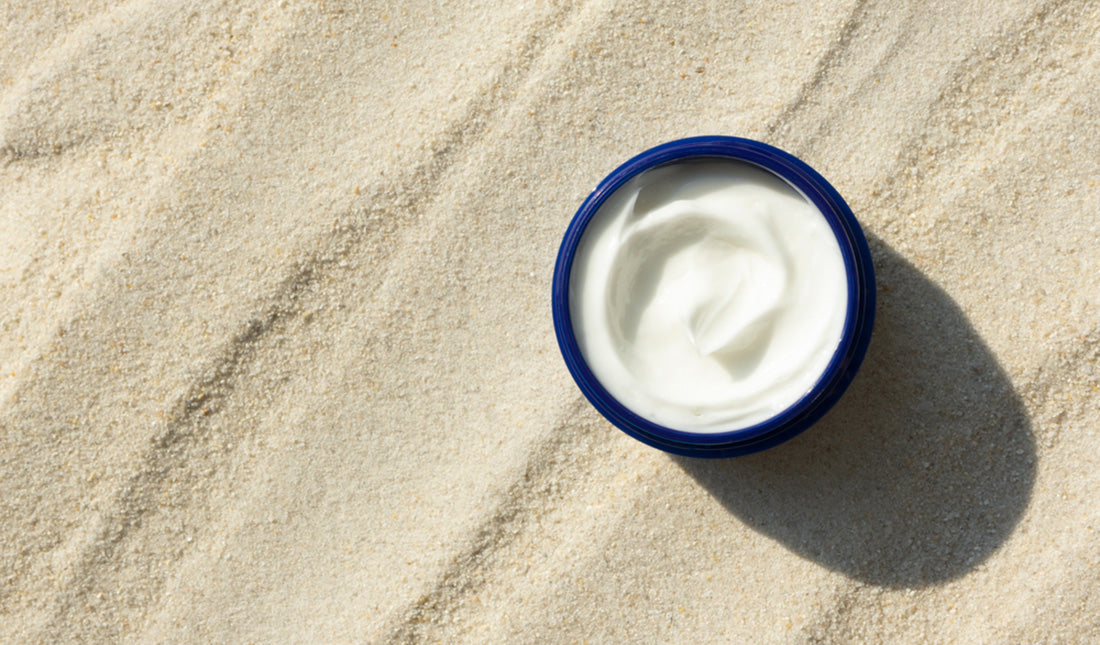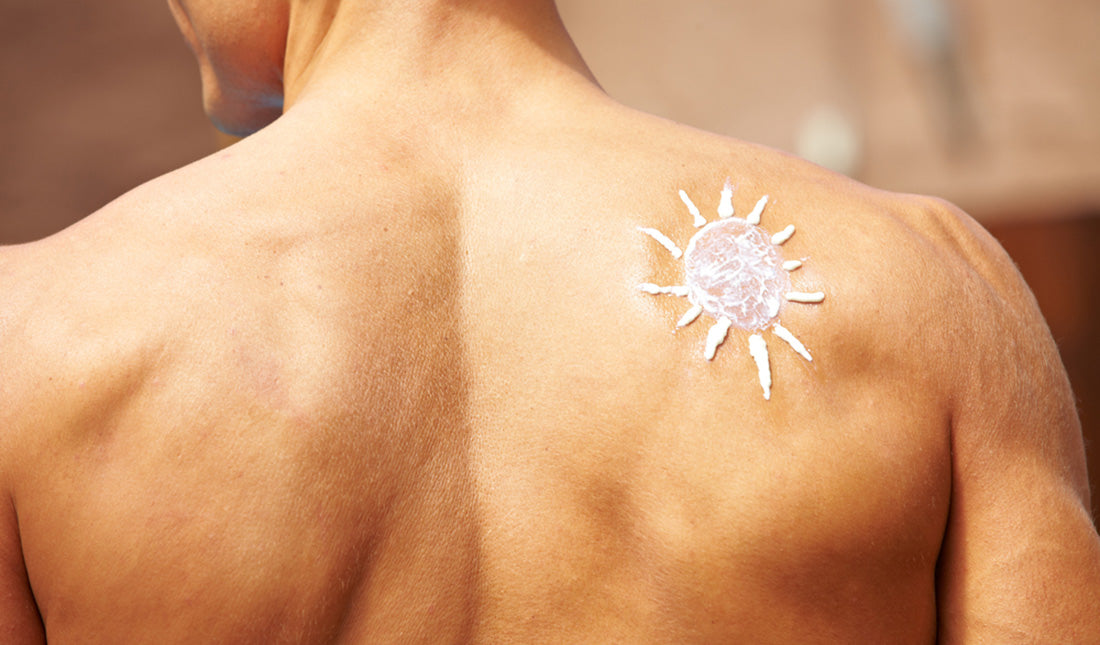By now, you know that applying sunscreen daily is non-negotiable.
It’s essential to protecting your skin from painful sunburns that contribute to skin cancer and premature aging of the skin.
One thing that is negotiable is the type of sunscreen you choose.
Zinc oxide sunscreen, a physical blocker, has quickly become a rising star in the sunscreen world.
But is it right for you?
While we can’t decide that for you, we can lay out some advantages and disadvantages to zinc oxide sunscreen.
Here are three things you should know about zinc oxide sunscreen:
- Zinc oxide sunscreen is a physical blocker that offers broad-spectrum protection against UV rays.
- Some of the benefits of zinc oxide sunscreen include instant efficacy and potentially fewer side effects.
- Zinc oxide often leaves an annoying white cast on the skin that may be a dealbreaker for some.
What Is Zinc Oxide Sunscreen?
Zinc oxide (ZnO) is a mineral sunscreen that provides protection against both UVA and UVB rays.
It works by sitting on top of the skin, scattering and reflecting UV rays to reduce potential sun damage.
Zinc oxide sunscreen is regularly touted as being a safer alternative to chemical sunscreens.
In fact, it is one of only two sunscreen ingredients that the FDA considers “safe and effective for sunscreen use,” with the other being titanium dioxide.

That being said, the nanoparticles in zinc oxide sunscreen have raised some concerns—namely, their potential to be absorbed into the skin.
But according to a 2018 study published in the Journal of Investigative Dermatology, there is no evidence that zinc oxide nanoparticles can penetrate the skin’s epidermis (see claim: “repeated application of ZnO-NPs to the skin, as used in global sunscreen products, appears to be safe, with no evidence of ZnO-NP penetration into the viable epidermis nor toxicity in the underlying viable epidermis.”)
GOT WRINKLES?Pros
Whether you’re using a zinc oxide lip balm or you’re slathering the stuff all over your body, there are plenty of advantages to relying on zinc oxide sunscreen.
Here are a few reasons why you should pick up a zinc oxide sunscreen.
1. Blocks Both UVA and UVB Rays
It’s a common misconception that all sunscreen ingredients provide protection against UVA and UVB rays.
Since SPF ratings are based on UVB rays alone, your chemical sunscreen may not protect you against UVA rays, which are the type that play a big role in premature skin aging.
Zinc oxide sunscreen can protect you from both UVA and UVB rays so you can reduce your risk of sunburn AND wrinkles.
Put simply, it can help you stay cancer-free and wrinkle-free.
2. Works Right Away
Unlike chemical sunscreens, you can apply zinc oxide sunscreen to the skin and go out in the sun immediately.
This is because zinc oxide sunscreen is a physical blocker, meaning it works by sitting on top of the skin and providing an instant barrier of protection against UV rays.
3. Safe for Sensitive Skin
Perhaps one of the biggest benefits to using zinc oxide sunscreen is that it’s generally amazing for those with sensitive skin.
In fact, zinc oxide by itself is commonly used as a topical treatment for minor skin irritations.
If you have eczema or another inflammatory skin condition, a zinc oxide sunscreen may be your best bet for sun protection.
Cons
There’s a reason why many people stick to chemical sunscreens, despite their controversy.
Although there’s no doubt that zinc oxide sunscreens work, they aren’t without their problems.
Here are a few reasons why you may not want to be too hasty in swapping out your chemical sunscreens for zinc oxide sunscreen.
1. Leaves a White Cast
By far, one of the most frustrating things about zinc oxide sunscreen is that it often leaves a white cast behind on the skin.
Unlike chemical sunscreens, which blend into the skin and, thus, make for great SPF moisturizers, zinc oxide sunscreens are usually visible.
The good news?
Mineral-based sunscreen formulas are getting better every year.
TAKE THE SKIN CARE QUIZ2. May Be Harmful to the Environment
Remember those nanoparticles we were talking about?
Well, the concern over man-made nanoparticles extends beyond the human skin barrier.
There has been some evidence to suggest that the engineered nanoparticles in zinc oxide sunscreen may cause harm to the environment.
In a 2018 study published in Environmental Nanotechnology, Monitoring & Management, researchers concluded that the increased use of zinc oxide nanoparticles suggested a negative impact on the ecosystem (see claim: “Increased application of ZnO nanoparticles indicated the negative impact on the ecosystem.”)
3. Not Always Completely Mineral-Based
One thing that consumers must be aware of is that not all zinc oxide sunscreens are chemical-free.
Some sunscreen manufacturers incorporate chemical sunscreen ingredients such as avobenzone or octocrylene into their mineral-based products, which can lead to confusion.
If you want a chemical-free formula, be sure to read the ingredients label carefully.

The Takeaway
As you can see, there are a myriad of reasons why using zinc oxide sunscreen can be beneficial.
But if you find yourself not using your zinc oxide sunscreen due to the annoying white cast it leaves behind, then it may be better to stick with a chemical sunscreen.
After all, what good is a sunscreen if you never use it in the first place?
References
Mohammed, Yousuf H., et al. “Support for the Safe Use of Zinc Oxide Nanoparticle Sunscreens: Lack of Skin Penetration or Cellular Toxicity after Repeated Application in Volunteers.” Journal of Investigative Dermatology, vol. 139, no. 2, Elsevier, Feb. 2019, pp. 308–15. www.jidonline.org.
Rajput, Vishnu D., et al. “Effects of Zinc-Oxide Nanoparticles on Soil, Plants, Animals and Soil Organisms: A Review.” Environmental Nanotechnology, Monitoring & Management, vol. 9, May 2018, pp. 76–84. ScienceDirect.








